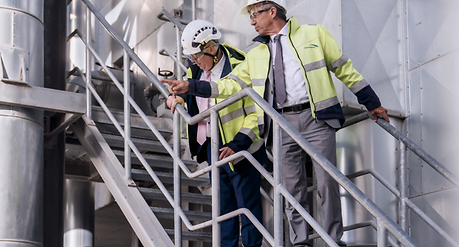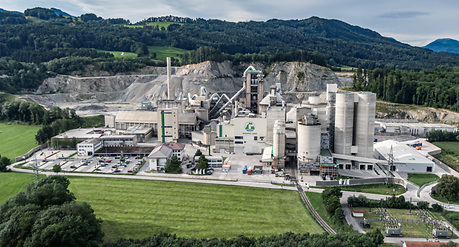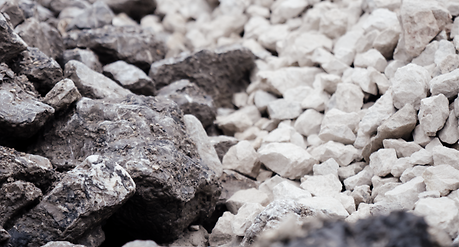“Co-creation is the magic word.”
Rohrdorfer Zement
ANDRITZ has delivered the first CO₂ capture plant for the German cement industry to Rohrdorfer Zement. It has been adapted to the needs of the company to best advantage and was planned and built within a very short time.
The plant is able to capture two tons of CO₂ per day, which is then used as a valuable resource in chemical plants and breweries. Rohrdorfer plans to increase this figure to 1,500 tons per day. The pilot project makes an important contribution towards achieving the German cement industry’s goal of being able to produce climate-neutral cement by 2050.
The 21-meter-high tower on the premises of Rohrdorfer Zement in Upper Bavaria doesn’t look very impressive at first sight. But it contains something quite sensational: Germany’s first CO₂ capture plant for cement production. The facility was built in close collaboration with ANDRITZ and captures two tons of carbon dioxide per day. But that is only the beginning. Helmut Leibinger, head of the Net Zero Emissions team, and Günther Wunsam, Commercial Manager of the Cement Division, explain why the project is groundbreaking and what plans Rohrdorfer has for the future.
Rohrdorfer Zement
Headquarters of Rohrdorfer Zement near Rosenheim in Upper Bavaria.
Rohrdorfer Zement
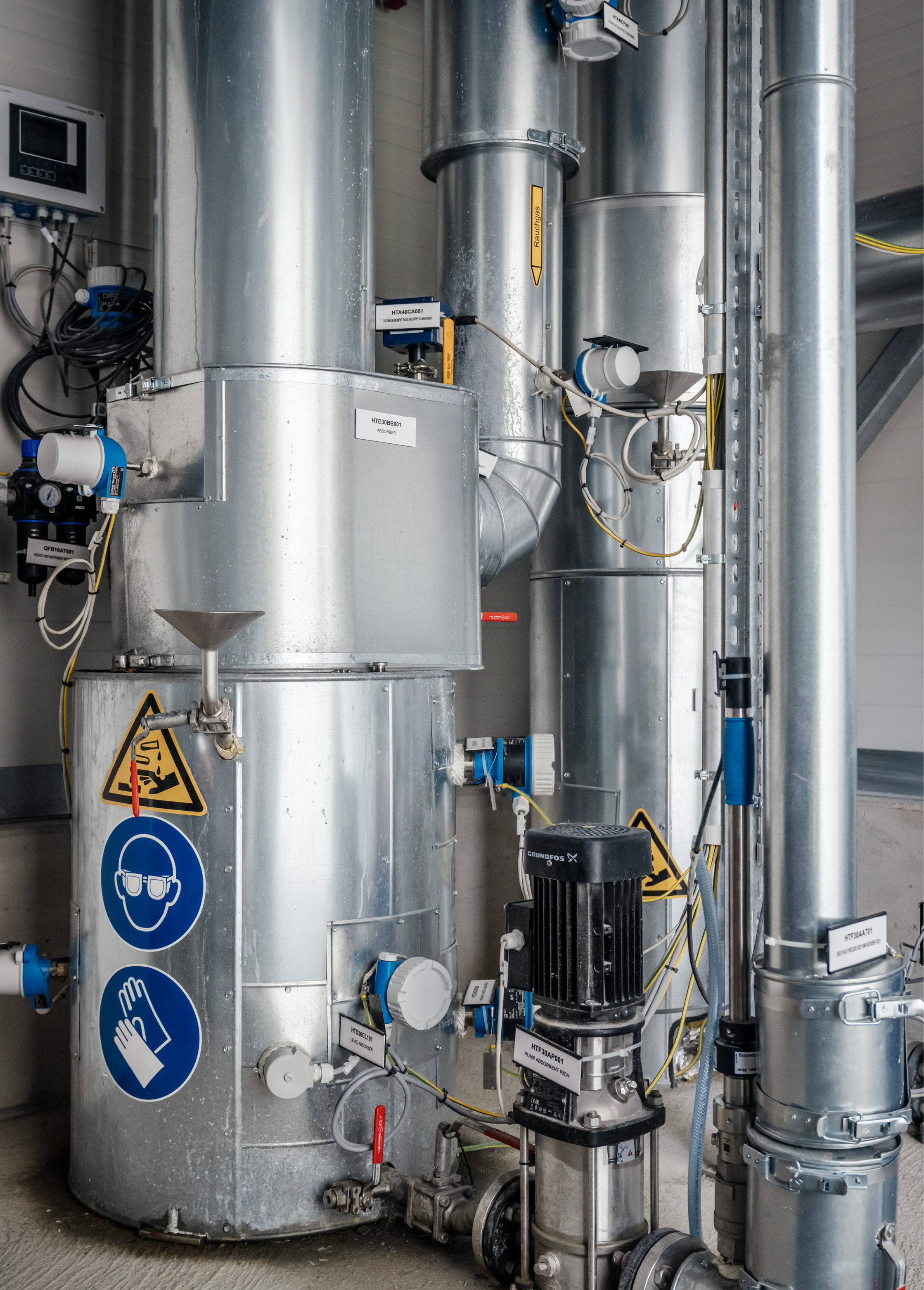
CO₂ capture plant supplied by ANDRITZ
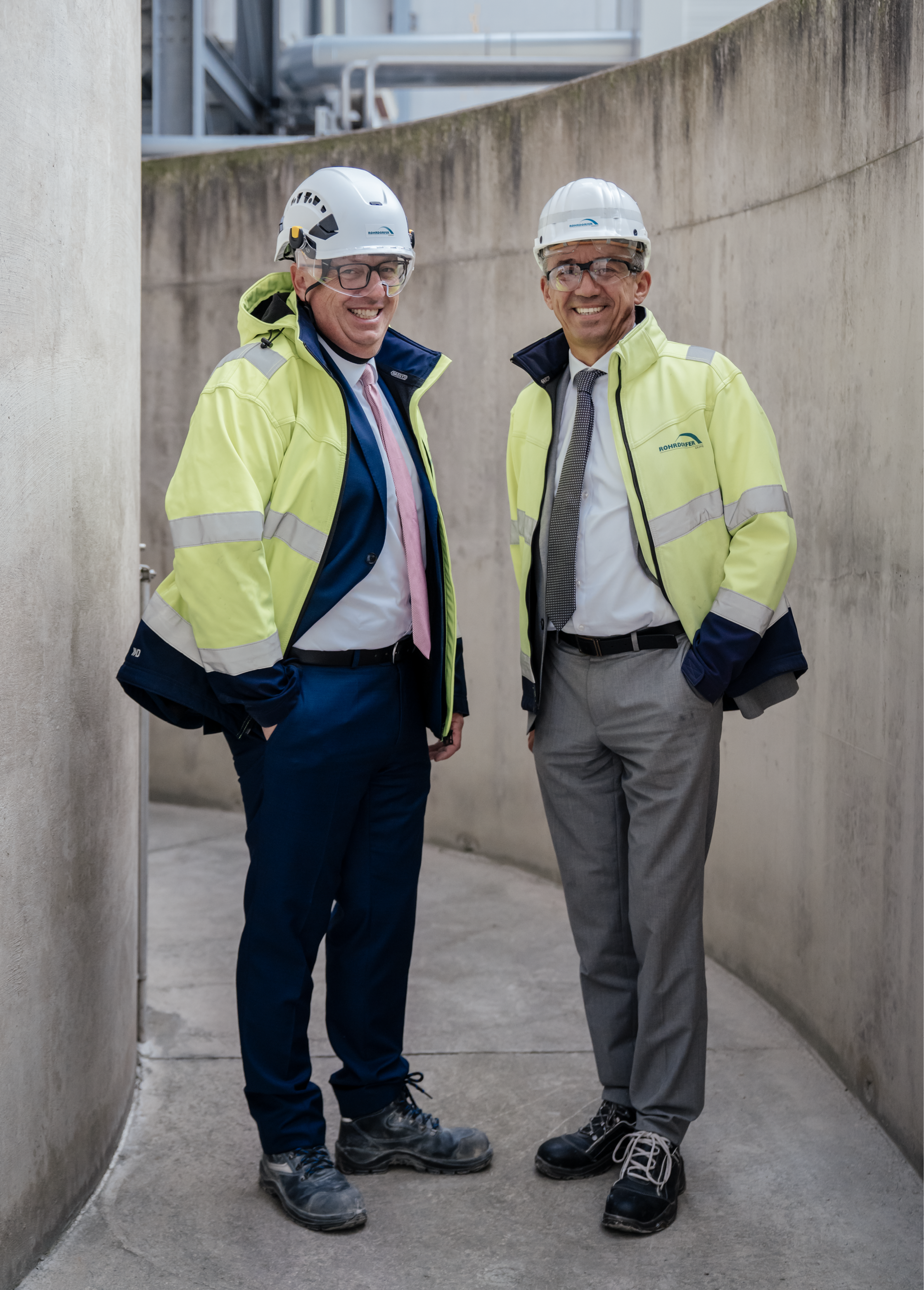
Dr. Helmut Leibinger (l.) heads the 16-member Net Zero Emissions team. Günther Wunsam (r.), Commercial Manager of the Cement Division.
Mr. Wunsam, the German cement industry wants to achieve climate-neutral production by 2050. What is next on the agenda at Rohrdorfer?
GW
We want to be faster than that and aim to decarbonize our production by 2040. This is ambitious, but I believe we are on track. In 2022, we were producing cement here with 45% less CO₂ than in 1990. This succeeded because we optimized the types of cement and use of the fuels. We want to achieve savings of 65% by 2030. The remaining 35% of the CO₂ will be used as a valuable resource – which brings us to our pilot plant.
How are you going to do this?
GW
In principle, the carbon in the CO₂ can be further processed to produce methanol, ethylene or formic acid. In this way, products can be obtained that are mainly produced today using mineral oil. So the bottom line is, if we look at and use CO₂ as a source of carbon, we are protecting the climate and making companies less dependent on mineral oil and natural gas. In turn, this opens up new business segments for Rohrdorfer.
Carbon dioxide makes a significant contribution towards global warming. In addition to increases in efficiency, energy savings and the use of renewable energy sources, CO₂ capture also helps to reduce emissions.
Overview of the ANDRITZ technology:
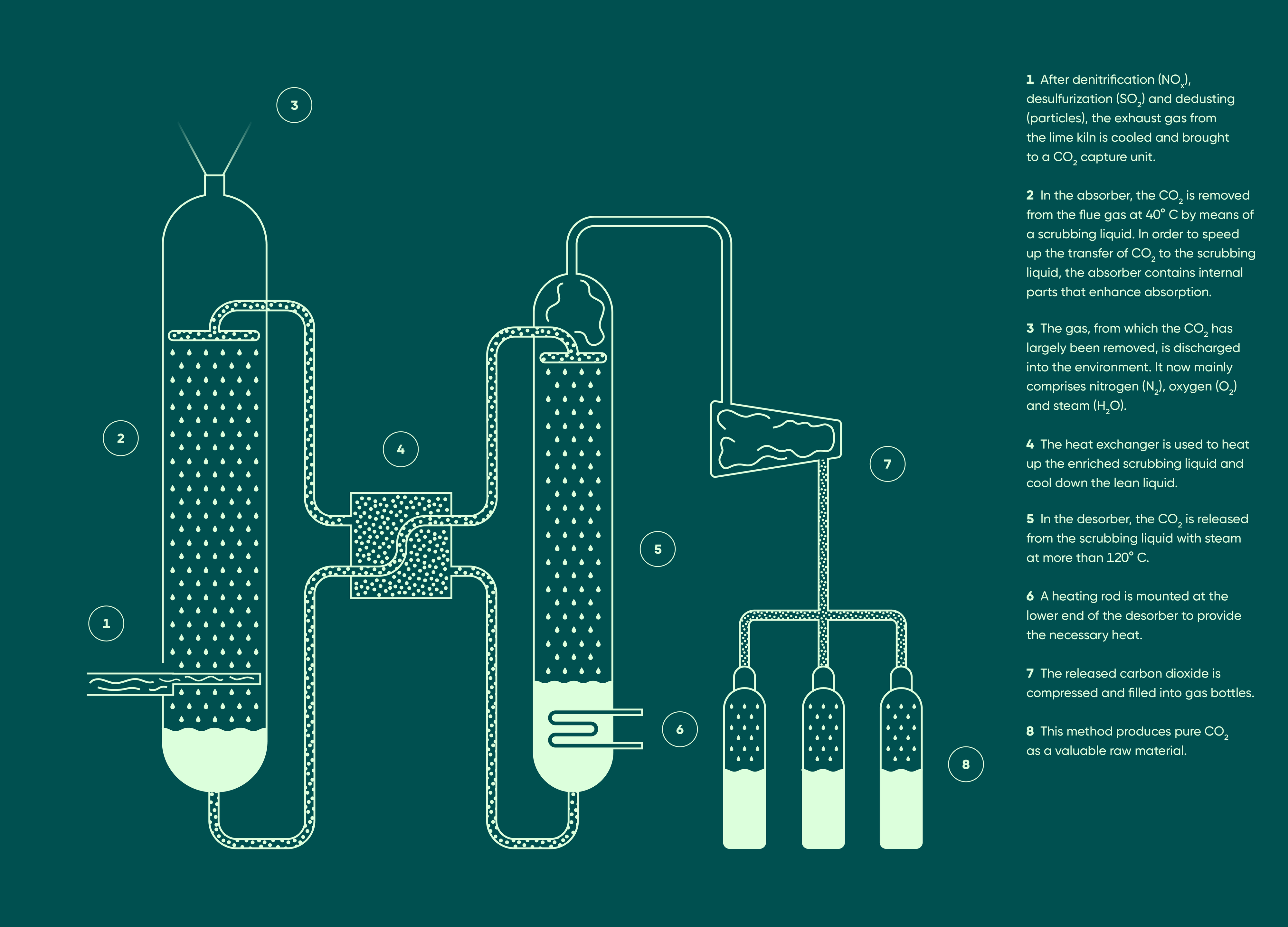
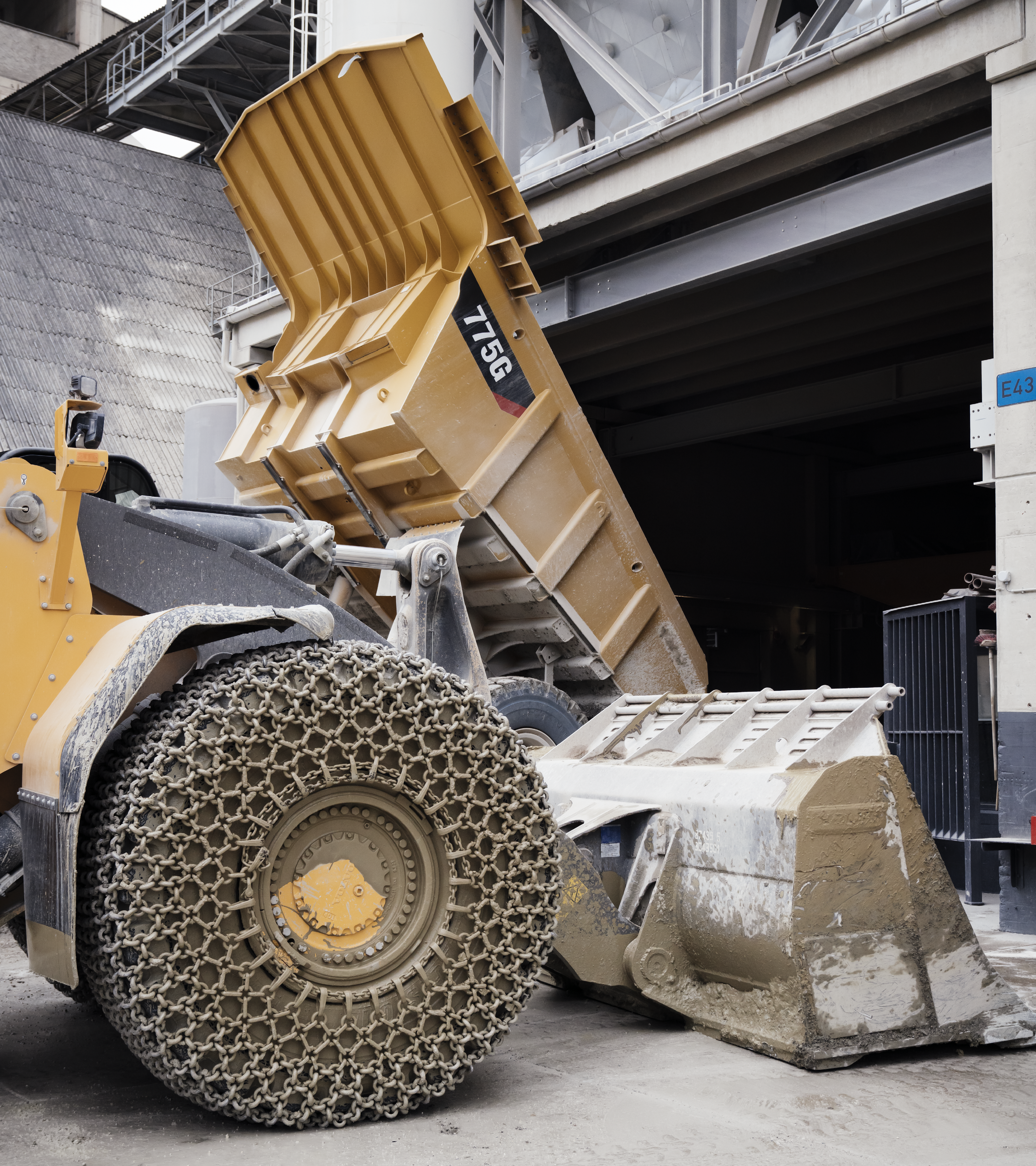
Heavy equipment is essential in cement production.
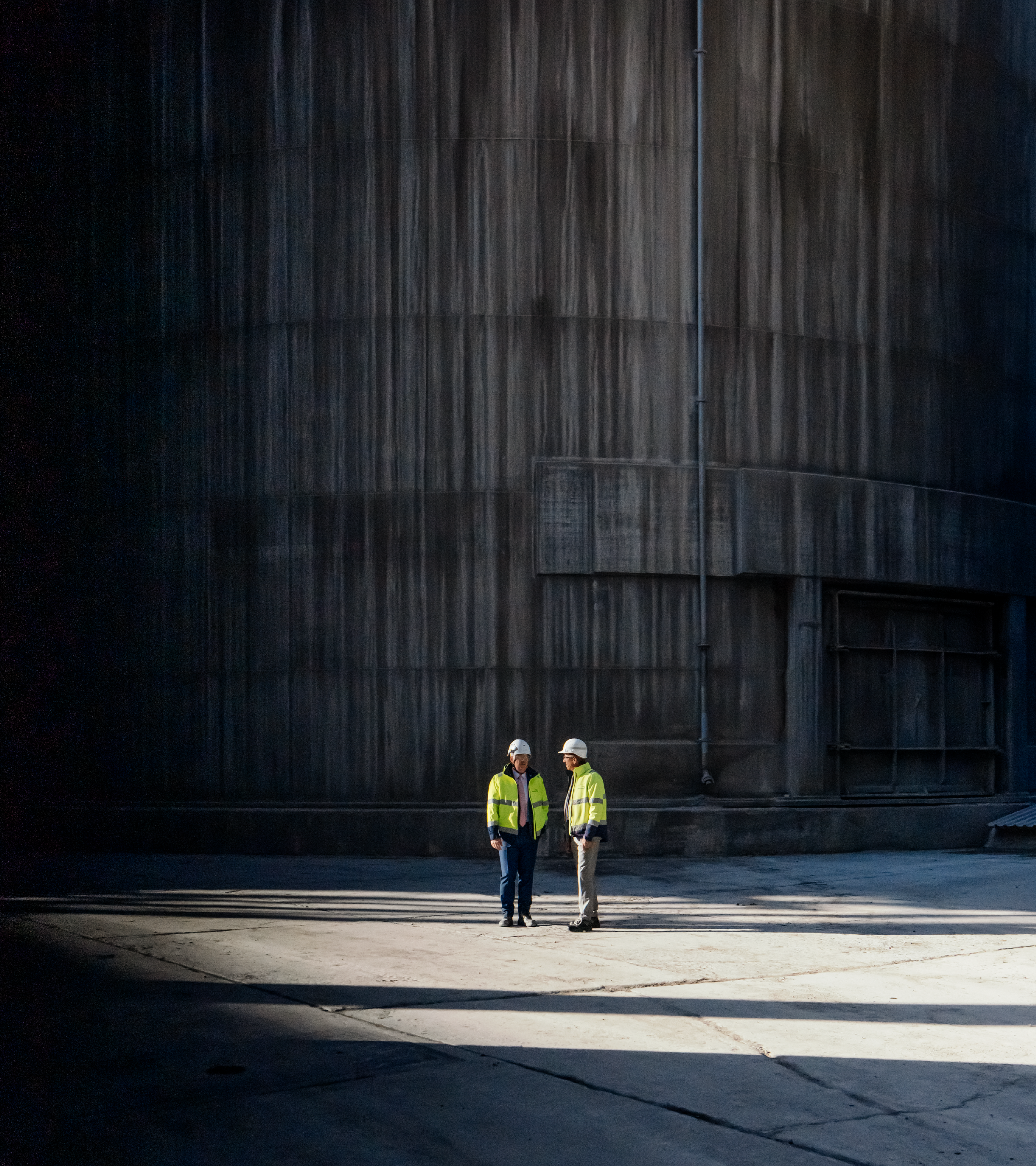
Helmut Leibinger and Günther Wunsam on an inspection tour of the extensive company premises.
Mr. Leibinger, can you explain this in a little more detail?
HL
In our pilot plant, we remove the CO₂ from the flue gas produced in our cement process fully automatically and store it in special steel bottles. We then deliver these bottles to the chemical industry or to breweries, for example. There is considerable interest in both sectors. The formic acid recovered from the carbon dioxide capture is used as the basis of cleaning and de-icing agents and similar products. In addition, the gas can be used to increase the carbon dioxide content of mineral water. That is why we make a point of ensuring that our CO₂ is of food grade.
How much do you intend producing in the medium term?
HL
In the next expansion stage of the facility, we will capture 48 tons a day. In the medium to long term, we have plans to recover 1,500 tons per day. The crucial factor in expansion of the facility is the maximum power rating available for the scrubbing process. That is why we are working very hard to make this process more and more efficient with the aid of heat pumps and heat recovery as well as by purchasing electricity from renewable sources in the future.
That’s how much CO2 Rohrdorfer Zement wants to capture every day in a few years’ time – 750 times more than the company captures today.
Rohrdorfer Zement produces high-grade building materials to cover regional demand at 142 locations in Germany, Austria, Italy, and Hungary. The product range comprises cement, ready-mixed concrete, prefabricated parts and concrete goods as well as sand and gravel. The company has 2,130 employees and considers itself a pioneer on the road to achieving CO2-neutral production of building materials. Rohrdorfer was among the first to use a scrubbed gas catalytic converter for denitrification and, with the aid of a power station, convert the waste heat from cement production into electricity.
Limestone is one of the raw materials in cement, which is used to produce one of the most important building materials in the modern world: concrete.
Your partner in this mission is ANDRITZ. How would you rate this collaboration?
HL
We are very pleased with it. We kept exactly to the schedule and were even ahead of it at times, all this in spite of delivery problems during the COVID crisis. Right from the beginning, we had the impression that we were being heard and not just having a supposed solution imposed from above. ANDRITZ adapted the capture process to our individual needs in order to achieve optimum CO2 purity and longevity of the chemical solvent used for capture purposes. When you build and operate a pilot plant, you experience something new almost every day. ANDRITZ is helping us in these endeavors.
GW
Decarbonization of our industry is a mammoth task. It is comparable to the enormous technological efforts made in the 1960s to put a man on the moon. The principal goal – being CO2-neutral – can only be achieved if companies collaborate closely, join forces and create something new. Co-creation is the magic word. Our CO2 capture plant is a case in point that this can succeed.

